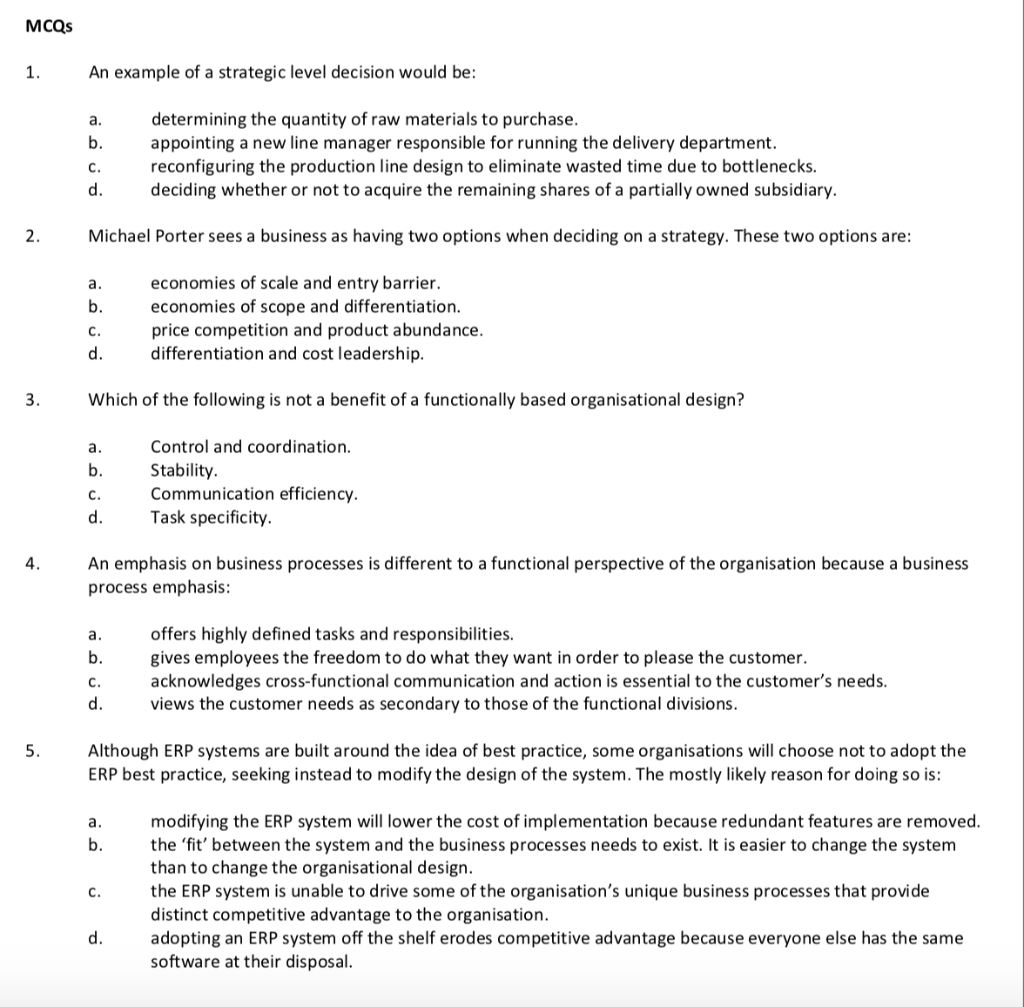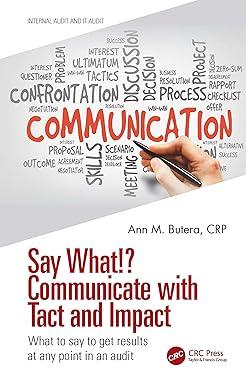Answered step by step
Verified Expert Solution
Question
1 Approved Answer
6.Explain the difference between a strategy of cost leadership and differentiation. 7.Porter suggests that there are two main strategies businesses can adopt. Why is it

6.Explain the difference between a strategy of cost leadership and differentiation.
7.Porter suggests that there are two main strategies businesses can adopt. Why is it not possible to adopt both at the same time?
8.Identify some of the management issues that may emerge from process redesign. Discuss their cause, likely consequences and how the organisation may manage these issues effectively.
MCQS 1. An example of a strategic level decision would be: a. b. determining the quantity of raw materials to purchase. appointing a new line manager responsible for running the delivery department. reconfiguring the production line design to eliminate wasted time due to bottlenecks. deciding whether or not to acquire the remaining shares of a partially owned subsidiary. c. d. 2. Michael Porter sees a business as having two options when deciding on a strategy. These two options are: a. b. economies of scale and entry barrier. economies of scope and differentiation. price competition and product abundance. differentiation and cost leadership C. d. 3. Which of the following is not a benefit of a functionally based organisational design? a. b. Control and coordination. Stability. Communication efficiency. Task specificity. c. d. 4. An emphasis on business processes is different to a functional perspective of the organisation because a business process emphasis: a. b. offers highly defined tasks and responsibilities. gives employees the freedom to do what they want in order to please the customer. acknowledges cross-functional communication and action is essential to the customer's needs. views the customer needs as secondary to those of the functional divisions. c. d. 5. Although ERP systems are built around the idea of best practice, some organisations will choose not to adopt the ERP best practice, seeking instead to modify the design of the system. The mostly likely reason for doing so is: a. b. c. modifying the ERP system will lower the cost of implementation because redundant features are removed. the 'fit' between the system and the business processes needs to exist. It is easier to change the system than to change the organisational design. the ERP system is unable to drive some of the organisation's unique business processes that provide distinct competitive advantage to the organisation. adopting an ERP system off the shelf erodes competitive advantage because everyone else has the same software at their disposal. dStep by Step Solution
There are 3 Steps involved in it
Step: 1

Get Instant Access to Expert-Tailored Solutions
See step-by-step solutions with expert insights and AI powered tools for academic success
Step: 2

Step: 3

Ace Your Homework with AI
Get the answers you need in no time with our AI-driven, step-by-step assistance
Get Started


